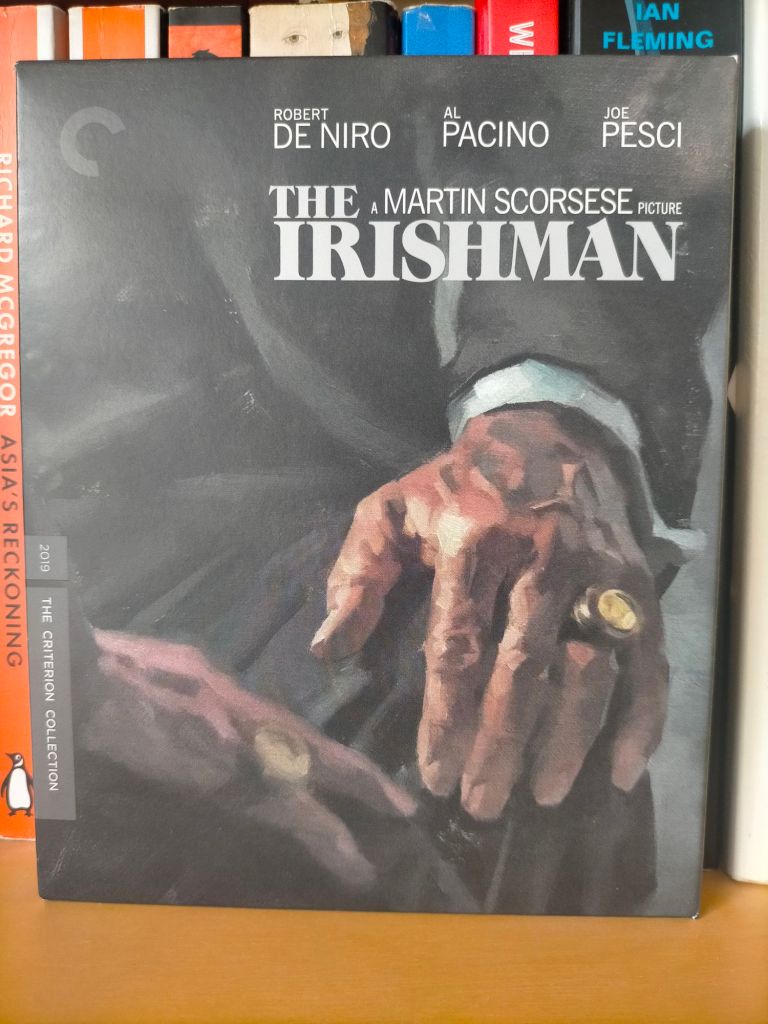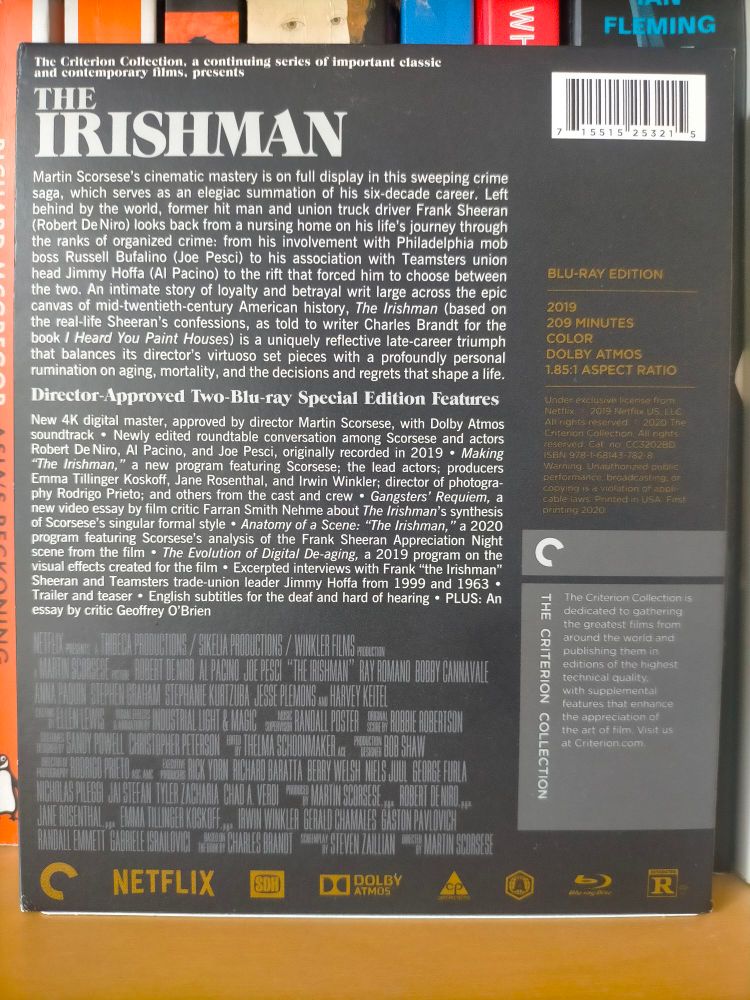Epic in terms of its scope, length and time period covered, The Irishman is one of Martin Scorsese’s finest films and an elegiac summation of his six decade career in filmmaking.

An adaption of Charles Brandt’s true crime novel I Heard You Paint Houses, The Irishman tells the story and life of truck driver turned hitman Frank Sheeran (Robert De Niro), and his career in organised crime with Philadelphia mob boss Russell Buffalino (Joe Pesci) and later Teamsters union leader Jimmy Hoffa (Al Pacino). Told over an extended runtime of 3.5 hours (209 minutes), the film is a masterful blend of biography, crime drama and American political history.
The three actors of De Niro, Pacino and Pesci are the core of the film, and it is fantastic to see them together again as older, wiser and thoughtful men in the outstanding characters that they play. De Niro, in his best acting role in years, plays a muted and quiet truck driver turned hitman who’s soul and heart is increasingly detached from his character as he completes more tasks (i.e. hits) and delves deeper into the Italian Mafia underworld throughout the film. Equally subdued, precise and measured is Pesci as Russell Buffalino, a man who upon first look appears hospitable, warm and friendly but possesses a frighteningly dangeous mannerism behind those dark glasses. It is a completely different portrayal to the loud, obnoxious and violent characters of his past in Goodfellas (1990) and Casino (1995).
The highlight of the film, however, by far (for me at least) is Pacino as the larger than life Teamster union boss Jimmy Hoffa who was described as ‘more famous than Elvis’. Loud, over the top, funny and charming, Hoffa is one of Scorsese’s great characters put on film and his presence gives it some great entertainment and spark in what is otherwise a quiet and reserved film. His antagonism towards New Jersey crime boss Tony Pro (Stephen Graham) and their meetings are the comedic highlight of the film. Through Hoffa and the Teamsters, Scorsese also delves into the political history of America, with key events from the Kennedy and Nixon years interwoven into the characters lives.
Complementing this is the impressive use of de-aging technology throughout the film. That it was done without motion capture, due to the age of the actors and the distractions it would bring on set, is remarkable. The final result is excellent and looks brilliant, and is a testament to the visual effects team who spent four years perfecting it.

Finally, it is also wonderful to see Harvey Keitel in a Scorsese film again for the first time since The Last Temptation of Christ (1988). Whilst his appearance as mob boss Angelo Bruno is brief, there is an eerie and frightening quality to his character that is enough to send most people running for their lives.
What makes The Irishman remarkably different to other crime films, however, is the final half hour. As old age creeps on the characters, the film enters an elegaic, wistful and mournful mood, with themes of regret, sadness, loss and death present as time moves on and their stories and lives are consigned to history. Here, tragically, the consequences of Frank’s actions become present, as he becomes a man longing for companionship and love but unable to feel empathy or remorse for his past.
Masterful in its production, quality and scope, The Irishman is one of Martin Scorsese’s finest films and is crime drama at its very best.
“It’s what it is.”
“some people think you aren’t showing appreciation.”
“Don’t ever be late for a meeting with Jimmy Hoffa.”
https://www.criterion.com/films/30553-the-irishman
https://www.wired.com/story/the-irishman-netflix-ilm-de-aging/

